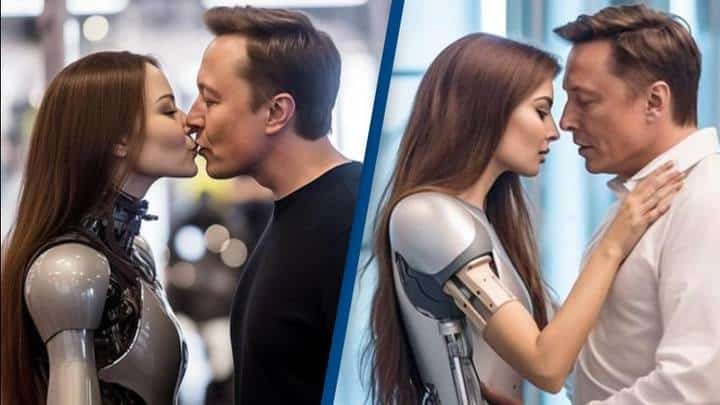Recently, viral pictures depicting Elon Musk, the renowned entrepreneur and CEO of Tesla and SpaceX, seemingly engaged in an intimate moment with a humanoid robot have ignited a wave of curiosity and debate. The authenticity of these images has come under scrutiny, prompting a closer examination of their origin and raising broader discussions about the evolving relationship between humans and robots.
While some initially believed the photographs to be genuine, further investigation reveals that they are, in fact, the product of digital manipulation. The viral images were created using sophisticated editing techniques, merging existing photographs of Elon Musk and a humanoid robot to create the illusion of a romantic encounter. It serves as a reminder of the power of digital media to create convincing but misleading content.
Nevertheless, the photographs have sparked intriguing conversations about the future of human-robot interactions and the evolving role of robotics in society. As technology continues to advance at an unprecedented pace, the boundaries between humans and machines become increasingly blurred, raising ethical, social, and technological considerations.
Elon Musk, known for his bold visions and futuristic outlook, has been a vocal advocate for artificial intelligence and its potential to shape the future. While the viral images may be fake, they have ignited discussions about the potential implications of human-robot relationships and the boundaries of human interaction with advanced machines.
The field of robotics has made significant strides in recent years, with humanoid robots becoming more sophisticated and capable of emulating human gestures and expressions. As these technologies advance, it is crucial to consider the ethical dimensions surrounding human-robot relationships, including questions of consent, privacy, and the impact on human interpersonal connections.
Critics argue that the sensationalised portrayal of Elon Musk’s interaction with a humanoid robot in the viral images may trivialise the complex ethical considerations associated with human-robot relationships. They emphasise the need for responsible and informed discourse about the future integration of robots into society and the potential consequences of such developments.
On the other hand, proponents of human-robot interaction highlight the potential benefits that advanced robotics can bring, such as assistance in healthcare, elderly care, and dangerous or repetitive tasks. They argue that responsible and thoughtful integration of robots into various domains can enhance efficiency and improve the quality of life for individuals.
As the viral images of Elon Musk and the humanoid robot continue to circulate, it is crucial to critically evaluate and discern the authenticity of media content. While the specific photographs may have been debunked, they serve as a catalyst for broader conversations about the impact of robotics on society, the ethical considerations surrounding human-robot interactions, and the need for responsible adoption of emerging technologies.
The viral images portraying Elon Musk kissing a humanoid robot have been revealed as digitally manipulated, emphasising the importance of verifying media authenticity. However, the incident sparks valuable discussions about the future of human-robot relationships, the boundaries of technology, and the ethical considerations involved. As society navigates the integration of robotics and artificial intelligence, it is crucial to approach these advancements with a critical and responsible mindset, ensuring that the potential benefits are harnessed while addressing the associated ethical challenges.






